What are the names of Japanese rice varieties and what are their features?
Rice is the most valuable crop in Japan. This is the pride of the inhabitants of the Land of the Rising Sun, the basis of the well-being of the state. The Japanese eat it every day and prefer their own - Japanese. This cereal is the most expensive in the world. 1 kg of cheap rice costs 160 rubles, but the Japanese do not skimp on this product and prefer expensive varieties.
Rice is grown many thousands of years. During this time, the choice of varieties has become incredibly diverse, and each of them has unique properties. Why is Japanese rice so unique? Read on.
Chemical composition, trace elements and vitamins of Japanese rice
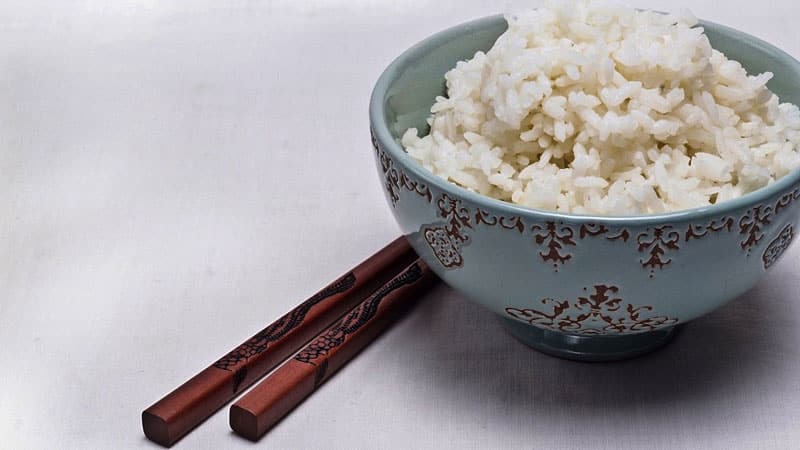
This product nourishes the body useful substances, It is easily digestible and serves as a source of energy, which is necessary for the functioning of all organs.
It contains no fat-soluble vitamins. Among the water-soluble ones, there are B vitamins, which have a beneficial effect on the skin, hair and nails.
Content of B vitamins per 100 g of product:
- B1 - 0.1 mg;
- B2 - 0.05 mg;
- B3 (PP) - 1.6 mg;
- B5 - 1.3 mg;
- B6 - 0.1 mg;
- B9 - 9 mcg.
White grain contains phosphorus, zinc, calcium, iron, iodine, and 8 amino acids. All this is necessary for a person to create new cells. Potassium cleanses the body and is involved in joint rejuvenation.
Brown rice, thanks to its outer shell (bran), contains a large amount of fiber, vitamin E, magnesium and manganese. Therefore, in terms of usefulness it is superior to polished white.
Calorie content and BZHU
Any food serves as a source of energy.For a healthy diet, a person needs an optimal ratio of proteins, fats and carbohydrates.
The caloric content and nutritional value indicators depend on the variety, so the following figures are considered average.
For 100 g of Japanese rice there is:
- proteins - 5.50 g;
- fat - 0.63 g;
- carbohydrates - 50.5 g.
The calorie content of the cereal is 272.67 kcal.
BJU ratio: 85% carbohydrates, 11% proteins, 4% fats.
Of all cereal crops, rice contains the highest amount of protein. This is the main material for building cells, muscles, organs, and tissues. This product is useful not only for young and growing bodies, but also for adult bodies.
Attention! This cereal does not contain saturated harmful fats or trans fatty acids, which means that even with constant consumption there will be no bad cholesterol in the blood.
What are the benefits of Japanese rice?
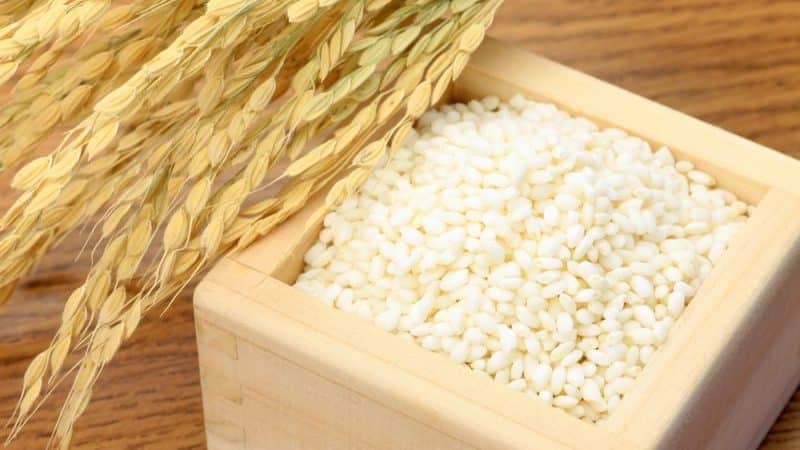
All over the world it is believed that if rice turns out fluffy after cooking, it is a product of the highest quality. And only the Japanese love sticky boiled rice. After heat treatment, it does not boil into porridge.
Japanese dishes with rice, where it is rolled into balls, cakes, rolls, look beautiful and appetizing. All grains are one to one, after cooking they do not lose their shape and stick tightly to each other.
Any variety of Japanese rice contains a balanced amount of vitamins and microelements. Residents of the Land of the Rising Sun are considered long-livers - what is the reason? Every Japanese diet includes daily consumption of this product without salt and spices. A week produces at least 2 kg. The Japanese owe their longevity to rice.
Methods of application
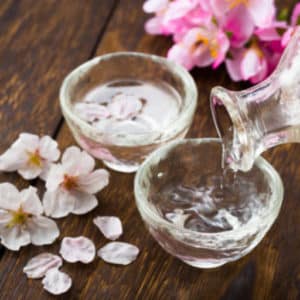
The Japanese not only eat rice as part of their dishes, but also come up with various products based on it:
- sake, or rice wine, is known far beyond the borders of the land of the rising sun.This alcoholic drink is obtained through the fermentation of grain. Sake is served hot or cold. Rice dishes are not served with rice wine as an appetizer.
- Sweet rice wine - mirin - do it in the same way.
- Rice vinegar produce light and dark colors. Light is used in canning and preparing rice for sushi. Dark is considered a health drink.
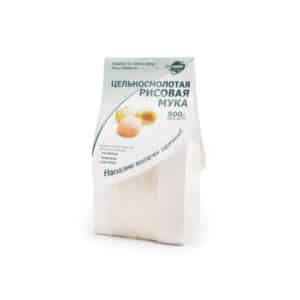 Rice flour milled from milled glutinous white rice. It is used to bake bread, Japanese sweets and rice crackers. Used as a thickener.
Rice flour milled from milled glutinous white rice. It is used to bake bread, Japanese sweets and rice crackers. Used as a thickener.- Rice bran, or nuka, are formed when brown rice is polished. This is the hard outer shell of the grain. Bran is nutritious and is used in many Japanese recipes.
Japanese rice varieties
The varieties of rice grown in Japan are called Japanese or Japonica. It is cultivated throughout the country. Each locality (prefecture) has its own varieties.
There are about 700 varieties of rice known in the world, and about 50 are grown in Japan. Let’s talk about the most common ones.
Interesting! Rice culture in Japan is more than 3 thousand years old.
Urutimai
Short grain, has a rich, slightly sweet taste. It becomes sticky during cooking. Used to make sushi.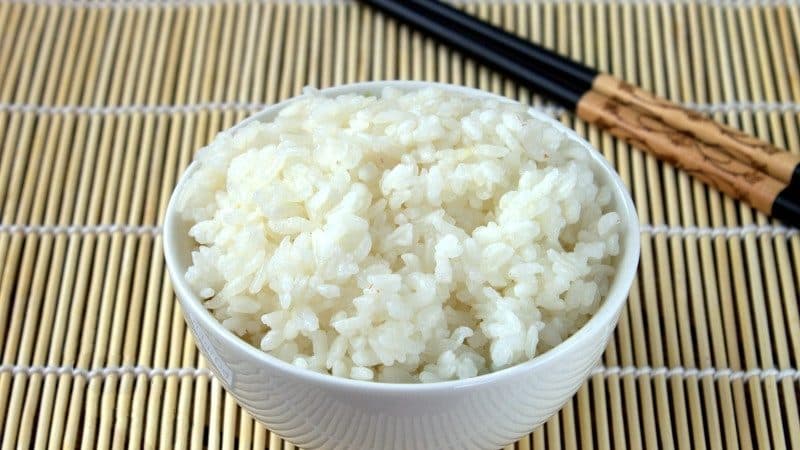
Hakumai
Another name is white rice. The short grains are polished to remove the hard outer shell. When cooked, hakumai becomes sticky.
Mochigome
A cereal with short grains and a matte surface. The heat treatment makes it stickier than regular Japanese. It is used in making sweets and rice cakes because it contains a lot of sugar. It is preferable to steam it.
Genmai (Genmai)
Brown rice Long grains contain more vitamins and minerals on the outside because they undergo less grinding. The Japanese eat it much less often, as they consider it not as tasty as hakumai. But due to its nutritional qualities, genmai is gradually gaining popularity.
Koshihikari
Its main feature is taste. Cooked rice is shiny, highly sticky and rich in flavor. Grown only in Niigata Prefecture.
Koshiibuki
Brought out in 1993 based on the Koshihikari variety. After cooking it turns out crumbly. The sweetish taste remains even when chilled.
Beneficial properties for the human body
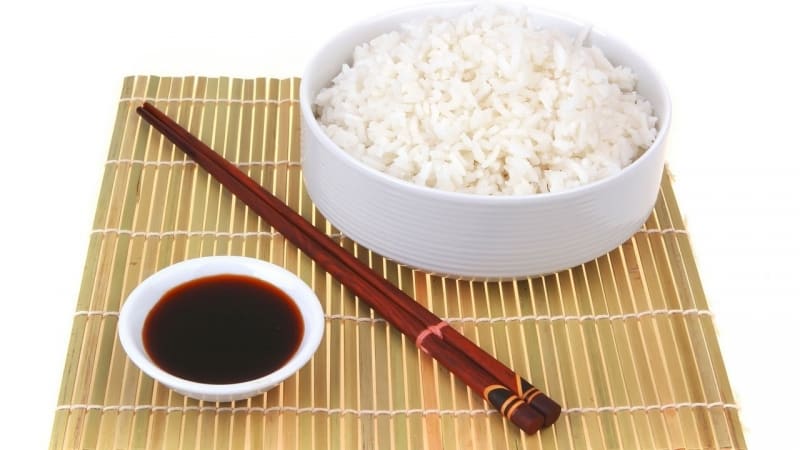
Japanese rice is called the key to health, because it has many beneficial properties:
- the richest composition of vitamins and minerals provides the body with energy, participates in the production of new cells, and promotes bone health;
- contains fiber, which protects the digestive system from toxins;
- low in calories, which improves metabolism and promotes weight loss;
- promotes normal functioning of the cardiovascular system;
- rejuvenates the skin (rice masks treat problematic skin, antioxidants help fight wrinkles);
- strengthens the immune system.
Possible harm and contraindications
Despite all its beneficial properties, Japanese rice cannot be considered a cure for diseases. It is consumed in moderation and takes into account the characteristics of the body and concomitant diseases.
The Japanese themselves do not live a single day without rice. They prefer polished white - the most expensive, but not the most useful. The degree of polishing determines how many vitamins and microelements will remain in it.
Brown varieties are affordable. Their taste is less pleasant, but in terms of the presence of useful substances they come first.
There are no special contraindications to eating Japanese rice. Doctors advise type 2 diabetics to eat it with caution, due to its high carbohydrate content. In this case, it is important to take into account the variety and not overuse those that contain a lot of sugar.
Conclusion
Japanese rice is becoming popular all over the world. Its varieties are different appearance grains, processing methods, taste, nutrient content.
The benefits of this cereal are enormous. When consumed, the body receives the necessary vitamins and minerals. It is involved in cell restoration, helps the digestive and cardiovascular systems. Due to its low calorie content, it is recommended as a dietary product.